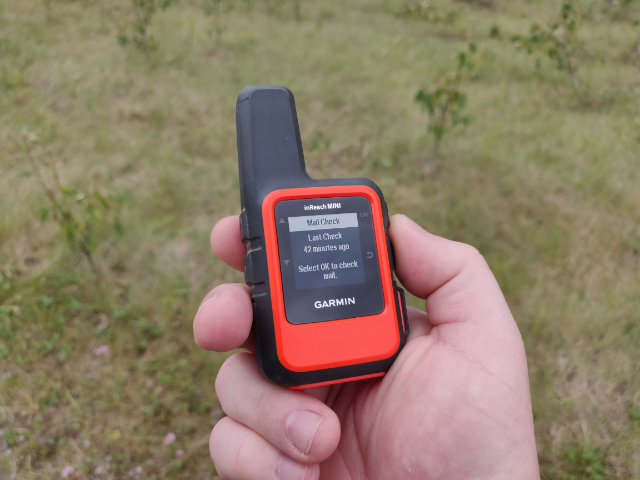
If you spend your life in cities or on the interstates that connect them to one another, it’s easy to forget that there are parts of the world where cellular connectivity simply doesn’t exist. Right now, I’m 45 minutes from the nearest town, sitting in a motorhome, surrounded by nothing but trees. Out here, a busy day consists of seeing a few logging trucks or maybe some elk wander by. It’s remote, but I’m
still able to connect to the Internet and do my job over my cellphone’s cellular connection. I can amplify my connection to cell towers using a cellular booster that I installed on our rig, earlier this year. But there have been instances where we’ve found ourselves far enough out in the sticks that I couldn’t find a cell signal to save my life. That’s why a device like Garmin’s
InReach Mini is so cool. It’s a tiny satellite-connected communications device that lets me stay in touch with the outside world even when the outside world is too far away to connect to. At 2.04” x 3.90” x 1.03” in size and weighing less than four ounces, this thing is designed for the backpacking crowd. It has an IPX7 rating, so it’s OK to clip it to your belt or a backpack without fear of it being fried in a downpour while you’re out and about. That’s good news, as the Mini needs a clear view of the sky for it to connect to Iridium satellite network in order to do its thing. If you’re hoping to score a connection while it’s still inside of your rucksack or while you’re under tree cover, you’re going to be disappointed. While you’re out in the open, say in a clearing in the middle of a forest or at the side of a logging road—examples that draws on my experience with the device—it’s another story. Without a single bar of cellular connectivity, I can use the inReach Mini to send a canned message to my loved ones and let them know that I’m OK while I’m out on trail. They can send messages right back to me. If they feel like stalking me, they can. The InReach Mini can be set to upload my whereabouts to Garmin's servers every ten minutes. This data is overlaid on a map that's accessable via a private website. The map details my current location and the track I've taken. When the Mini is connected to the Earthmate App on my iPhone via Bluetooth, I can use the it to send short text messages or emails to anyone in my phone’s contact list, via the device’s satellite uplink. I can even use the thing to check in on the weather for my location. For the six months of the year that I spend in Alberta, Canada, this is wildly important as the forecast here can turn on a dime. Dangerous thunderstorms and hail the size of quarters are not uncommon. Most importantly, if either of my wife or I get into trouble with an illness, injury or a mechanical failure that prevents us from getting to help, the InReach Mini has our back. On the side of the device, there’s a small panel that flips up. Under that panel you’ll find an SOS button. Pushing it will send your location and a distress call to
GEOS Worldwide—a company that specializes in providing safety solutions to travelers and adventurers. After receiving your distress signal, GEOS will call first responders in your vicinity to come and lend you the hand that you need. To keep you from wondering whether your message was received while you wait, they’ll also send along status updates to the InReach Mini to let you know when help is due to arrive. After owning one for a few months and using it every time I leave the RV to go for a hike, I’ve got nothing bad to say about this thing. However, there are a few of caveats that you you should know before you consider buying one of your own. First, satellite-connected hardware doesn't come cheap. A Garmin InReach Mini will set you back $350—and that’s just for the hardware. You’ll need to subscribe for
a rate plan to use it. Garmin’s plans for the device range in price from $12 to around $80, per month. To be able to use all of the features I do, you’ll need to pay for their Expedition plan, to the tune of $50 per month. Without a rate plan attached to it, the InReach Mini is nothing but an expensive paperweight—and a light one, at that. Second, you will wait for your messages. You will wait for a weather report. Almost everything that this device can do involves beaming data to and from a man-made moon orbiting the earth which then relays that data to a ground station. Shit like that takes time. Leave your expectations of instant communication at the door while you're using one of these things. Finally, having a device designed to save your ass in an emergency is no substitute for the training required to get yourself out of trouble. Before you go anywhere that having a piece of hardware like this might be an asset, take a first aid course. Learn how to read a map and use a compass instead of simply relying on GPS: figure out what you need in order to survive while you’re exploring the places you love. Doing so should keep you from having to push that SOS button in so many situations and provide you with a sense of confidence that just might spill over into other areas of your life.



